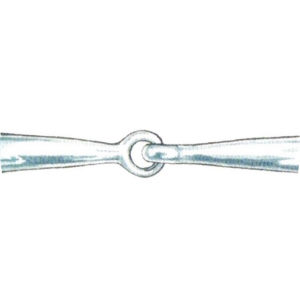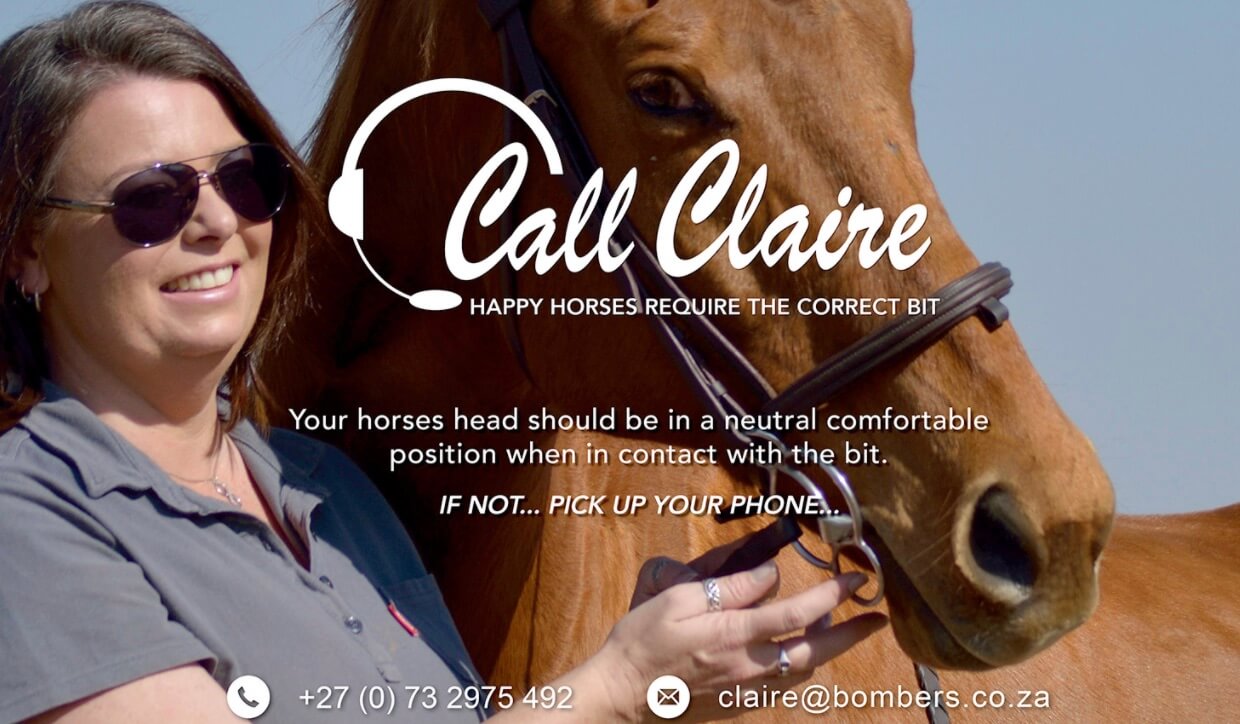At a routine visit to Australian eventer and Bombers Bits ambassador Andrew Hoy’s yard, British Equine Dental Technician (EDT) Simon Pratley shared these dental tips for horse owners:
Regular equine check ups are key – many of my customers are on an annual programme, but with some professional riders, like eventer Andrew Hoy, whom I work closely with, we would check their horses every six months.
Bit-wise, the most damage to the horse’s bars, in my experience, is actually caused by thick pelhams.
 A traditional single break snaffleI don’t like to see single jointed snaffles that have a thinner central joint and wide sides (left).
A traditional single break snaffleI don’t like to see single jointed snaffles that have a thinner central joint and wide sides (left).
Most horses are being ridden in too-big bits, eg. a size too large, so there’s a space at the side of the mouth.
In terms of some common issues I see as an EDT, I would say sharp edges and focal overgrowth is common, especially in the first pre-molars. Focal overgrowth is when there’s a ‘step’ in the mouth, where one tooth is a lot ‘taller’ than that the rest of the dental arcade. The horse’s teeth are continually erupting, so if they’re not wearing evenly, overgrowth occurs.
Equine dentistry is seeing some very interesting developments, such as fillings that help prevent fractures, and even root canal work, and the removal of excess soft tissue within the horse’s mouth. Every tooth can in theory be extracted under standing sedation now!
Low starch diets are recommended by EDTs.High sugar diets are a problem too – we see horses with peripheral caries, which are pitted areas on the sides of the teeth, where the outer layer of the tooth has been destroyed by bacteria in the mouth, potentially exposing the tissues. We also see crumbling and uneven tooth wear, often caused by rich haylage diets; horses that are ‘poor eaters’ are often given palatable haylage, to coerce them!
 Another issue is that some horses may ‘hold’ the bit if they can, to reduce tongue pressure, which can cause tooth wear. This is seen across all disciplines. I have seen an instance of ‘bit wear’ reducing once the horse’s hocks were treated, which shows that assessing the horse in the event of a problem should be holistic.
Another issue is that some horses may ‘hold’ the bit if they can, to reduce tongue pressure, which can cause tooth wear. This is seen across all disciplines. I have seen an instance of ‘bit wear’ reducing once the horse’s hocks were treated, which shows that assessing the horse in the event of a problem should be holistic.
I would always advocate that owners learn more about their horse’s mouth conformation, and if the horse is sensible and it is safe to do so, I do let owners feel inside the horse’s mouth while I am performing a check up. Education and explanation is key!
Email claire@bombers.co.za with your bitting queries.
#bombersbits #bombersbluebits #teambombers #bombersbitsbringbalance #bombersbits #BombersEquestrianEquipment #BombersBlueBits #horsebits



